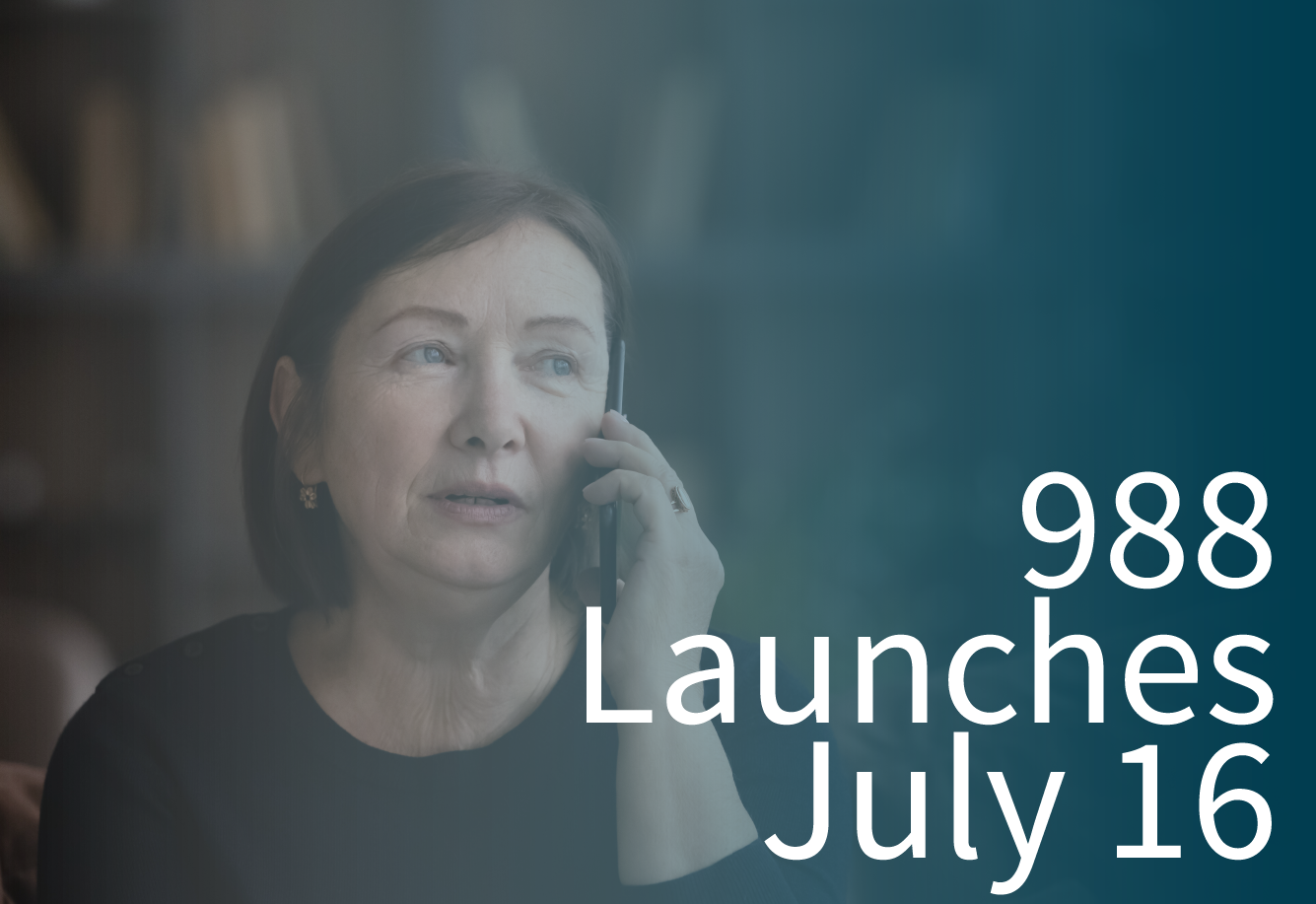Since its inception in 2005, the Lifeline has taken over 20 million calls across 200 centers in 50 states. Lifeline crisis centers are a critical part of their community, making referrals and connections to local resources, and in many cases offering suicide prevention training.
Now, as people experiencing a suicidal or mental health crisis call, text, or chat the new 988 number they will be connected to trained crisis counselors that are part of the existing Lifeline. So what’s changing?
According to Tim Jansen, Chief Executive Officer of Community Crisis Services, Inc., whose organization has three distinct contracts with the Lifeline, “It’s simply a change in digits from 10 to three.”
“But,” he adds, “it has put a magnifying glass on crisis centers which have been woefully underfunded for decades.”
Shari Sinwelski, Vice President of Crisis Care for Didi Hirsch Mental Health Services, agrees.
“For the first time ever we’re actually seeing the money that’s necessary to legitimize the work and that is a game changer,” she says. “This is a momentous occasion for suicide prevention. This is the first time we’ve seen real funding.”
Jansen and Sinwelski, who have a long history with the Lifeline, and who have taught almost 200 LivingWorks ASIST workshops and ASIST T4Ts between them, also agree on the essential role LivingWorks training plays in the ability of Lifeline counselors to support those in distress.
“I’ve got 275 people on my phones, and every one of them has to be trained in ASIST,” Jansen says. “ASIST-trained caregivers on the Lifeline save lives more often than non ASIST-trained caregivers do.”
A 2013 study by Madelyn Gould evaluated over 1,500 calls made to the Lifeline and showed that callers working with ASIST-trained counselors were significantly less depressed and suicidal – and significantly more hopeful about living.
“The differences observed in this study were in those behaviors that are specifically and distinctly emphasized in the ASIST model: exploring callers’ reasons for living, highlighting ambivalence between living and dying, and having callers identify informal sources of support.” (Gould et al., 2013)
“Lifeline and ASIST are in lockstep because we want to be very collaborative with the person who is having thoughts of suicide,”
Sinwelski explains. “Trying to be the least intrusive intervener we can be while keeping the person safe.”
“People rush to a more intrusive intervention because they are afraid of the outcome,” she continues. “But ASIST makes that space available to explore personal connection in a really safe and structured way.”
“One of the goals of 988 even more now is to allow people that space to process what has brought them there. That may sound like a no-brainer, but it actually wasn’t when the Lifeline started.”
Gould et al’s 2013 study cites a SAMHSA-funded evaluation of 17 ASIST-trained Lifeline centers which demonstrated significant reductions in suicidality among callers after staff were trained in practices consistent with active engagement of callers.
“That time spent opening up and connecting with thoughts of suicide – understanding how someone feels about suicide, their attitudes towards it – is right up there with PAL [Pathway for Assisting Life],” Jansen says.
“The most critical thing to understand about LivingWorks ASIST is that there is nothing like it,” he adds. “Nothing else out there is intervention.”
And just as LivingWorks ASIST provides a standardized, shared, and accessible pathway to increase helper competence in carrying out interventions, the new 988 will provide a similar pathway to support for those seeking help. The standardized, easy-to-remember number will increase parity and heighten access to the crisis care they need.
Ivory Ricks, Senior Training Coach and Senior Zone Lead for LivingWorks says “I’m pleased to have the 988 dialing code as an option for a safety contact when helping someone develop a safeplan.”
“Just as 911 is widely known as the number to dial for emergency help, 988 now has the same potential to become widely known as the number to dial to help a person with thoughts of suicide,” he says.
“It’s going to make access to care for people with thoughts of suicide much easier to connect to,” adds Jansen.
If you or someone you know is thinking about suicide please contact help and resources:
- USA: 988 Suicide&Crisis Line
- Canada: Talk Suicide Canada 1-833-456-4566 or Quebec 1-866-APPELLE (1-866-277-3553).
- Australia: Lifeline Australia: Call 13 11 14 or Text 0477 13 11 14 (6pm – midnight)
- United Kingdom: Samaritans: Call 116 123 for 24/7 support, Childline: Call 0800 1111






